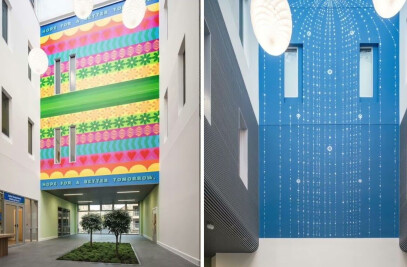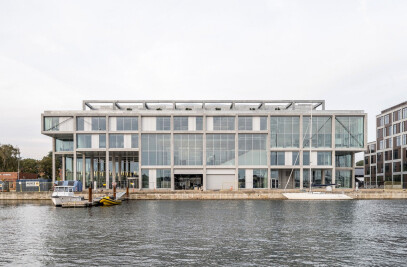C. F. Møller Architects and Norwegian firm Kristin Jarmund Arkitekter cooperate to design a new landmark for Oslo
C. F. Møller Architects, in collaboration with Kristin Jarmund Arkitekter, has won a major competition to design a spectacular new landmark project in the city of Oslo, for the client KLP Eiendom AS, one of Norway’s largest property investors. The project, which has been dubbed “Crystal Clear”, consists of three towers, which grow organically from the ground to form a sculptural cluster, and are composed of stacked, prismatic volumes.
The development totals approx. 90,000 m² of offices, commercial space and possibly housing, located at one of Oslo’s most valuable sites, the former postal sorting office adjacent to the central station. ‘Crystal Clear’ ties in with the city’s skyline, and the string of developing landmark projects that will help turn Oslo into one of Europe’s most modern capitals.
Partner and architect Mads Mandrup Hansen states:
”Crystal Clear” is a unique proposal for a modern, Nordic cluster of towers – a Norwegian urban rock, that in an exiting way adds to the city’s strategic endeavour to interlace town and port into a contemporary and lively waterfront, and at the same time fulfils the client KLP Eiendom AS’ vision to build the most groundbreaking high-rise offices in Scandinavia.
With “Crystal Clear” in Oslo, and two further high-rise projects in Sweden and two in Denmark, C. F. Møller Architects is cementing the position as leading designers of contemporary towers, adapted to the Nordic regional conditions, and focused on allowing high-rise developments enrich the urban domain. “Crystal Clear” is an excellent success story of how we deploy our strongest architectural skills in the field across borders, with a hand-picked team from Copenhagen, Aarhus and Oslo, to create an exceptional result.
Similarly, we will focus on sustainable environmental initiatives, reducing the complex’ carbon footprint considerably – as a natural part of C. F. Møller Architects and KLP Eiendom AS’ strategies of environmental certification and planning methods. Our ambition is that this project will be a large-scale demonstration of our many experiences gathered in sustainable design over the last years. We are proud that “Crystal Clear” once again gives us the chance to contribute a significant new project to the city of Oslo, strengthening our position in Norway, and demonstrating the broad spectre of skills our office possesses.”
“Crystal Clear”, which is being developed in collaboration with Kristin Jarmund arkitekter AS in Oslo, is C. F. Møller Architects’ fourth major building in the Norwegian capital – starting with the Bislett Stadium, the most famous athletics facility in the Nordic region, which was inaugurated at the international Golden League athletics event in 2005. Last year, the new Akershus University Hospital outside Oslo opened, as Norway’s most modern healthcare facility. Currently C. F. Møller Architects are also working on the restoration of the historic Domus Media building at the University of Oslo, this time collaborating with Erik Møller arkitekter.
ATKINS and Norwegian Erichsen og Horgen AS have collaborated as engineers on “Crystal Clear”, which is expected to be completed within 3-5 years.
ARCHITECTURAL DESCRIPTION
A high-rise development, located at Norway’s most important traffic hub in central Oslo, and with fantastic views of the waterfront and fjord-landscape beyond. The idea is to create a landmark sculptural ensemble of towers, yet observe the harmony with the surrounding, low-rise urban fabric of the capital. The three towers of approx. 110, 65 and 55 m height, are arranged along the edges of the site, and the tallest tower is aligned with the existing nearby Oslo Plaza and Postgirobygget towers, while the lower buildings form the link to the city.
The three towers have clear-cut and vertical elevations to the exterior of the site, with large openings and setbacks forming windows to selected viewpoints. In contrast, the elevations towards the interior of the site are composed of stacked, glazed volumes, freely arranged to form a prismatic and crystalline appearance. The layout secures the views over the water, not only for the three new buildings but also the city beyond.
In between the towers, a two-storey base containing shops and restaurants forms an undulating landscape that connects to street level via ramps, plateaus and stairs. This base creates a calm urban garden, framed by the tall buildings, with recreational space and cafes for the city and the buildings occupants. The towers are designed with a high degree of flexibility to house offices, hotels and possibly housing.

































